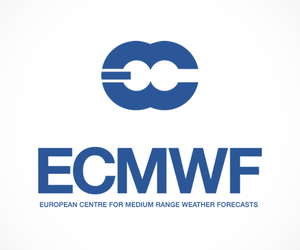Forecasting fires with SMOS
As the current wildfires in Canada show, climate change is increasing the risk and extent of wildfires across the globe. ESA, along with the European Centre for Medium-Range Weather Forecasts have taken a new approach by using realtime observations from ESA’s Soil Moisture and Ocean Salinity satellite mission to better anticipate the outbreak of fires.
As the effects of climate change intensify, monitoring wildfires becomes increasingly crucial. The recent report by the Intergovernmental Panel on Climate Change highlights the alarming rise in global temperatures and the associated risks, including an increase in the frequency and severity of wildfires.
It is now more important than ever to develop advanced methods of fire forecasting to protect both human lives as well as ecosystems in the face of a changing climate.
Current fire danger metrics have significant limitations. Most fire indices are calculated from daily temperature, relative humidity, wind speed and rainfall to simulate the moisture content of the ground at different depths.

However, they lack a connection with realtime information about the amount of ‘fuel’, such as dry vegetation or flammable material, that is present and susceptible to burning.
This leads to unrealistic results when applied globally. For example, fire danger over deserts is usually very high because of dry conditions, but fires are impeded because there is little vegetation to burn.
The newly-developed Fire Occurrence Probability Index (FOPI), described in a recent Environmental Research Letters paper, aims to enhance fire danger predictions in environments where fuel is limited and where fire risk is influenced by the rapid drying of intermittent fuel. It does this by combining the widely-used Canadian fire weather index with observations of Vegetation Optical Depth from ESA’s Soil Moisture and Ocean Salinity (SMOS) mission, serving as an indicator of fuel quantity and moisture.
Recent wildfires have ravaged Canada, with hundreds of reported incidents. Many of these wildfires remain uncontained, revealing the limitations of existing suppression strategies when confronted with unprecedented conditions. The thick haze of smoke they produced blanketed cities as far as the USA.
The animation above first shows the number of days between 1 May and 31 May that the FOPI for Canada and the northern part of USA was over 0.7, and then fire hot spots using data from two MODIS satellite sensors. FOPI values range from 0 to 1; 0 being no danger, and 0.8 and above being extreme danger.
Francesca Di Giuseppe, who coordinates the fire forecast at the European Centre for Medium-Range Weather Forecasts, comments, “If we integrate remote observations into fire danger models, we can improve the accuracy and timeliness of fire predictions on a global scale. This advancement enables earlier warnings and better preparation for firefighting efforts, helping to protect lives, property and ecosystems.
“The use of remote sensing technology also helps understand the causes and dynamics of wildfires. By analysing the data collected from remote sensors, we can study the factors that contribute to fire ignition and its subsequent behaviour. This knowledge facilitates the development of more effective prevention strategies.”
Klaus Scipal, ESA’s SMOS Mission Manager, adds, “This is an important example of how a scientific investment has evolved into an operational service with immediate benefit to society.”
The global map below shows the number of days between 1 May to 11 June 2023 that the FOPI was over 0.7.















 Germany
Germany
 Austria
Austria
 Belgium
Belgium
 Denmark
Denmark
 Spain
Spain
 Estonia
Estonia
 Finland
Finland
 France
France
 Greece
Greece
 Hungary
Hungary
 Ireland
Ireland
 Italy
Italy
 Luxembourg
Luxembourg
 Norway
Norway
 The Netherlands
The Netherlands
 Poland
Poland
 Portugal
Portugal
 Czechia
Czechia
 Romania
Romania
 United Kingdom
United Kingdom
 Slovenia
Slovenia
 Sweden
Sweden
 Switzerland
Switzerland
































